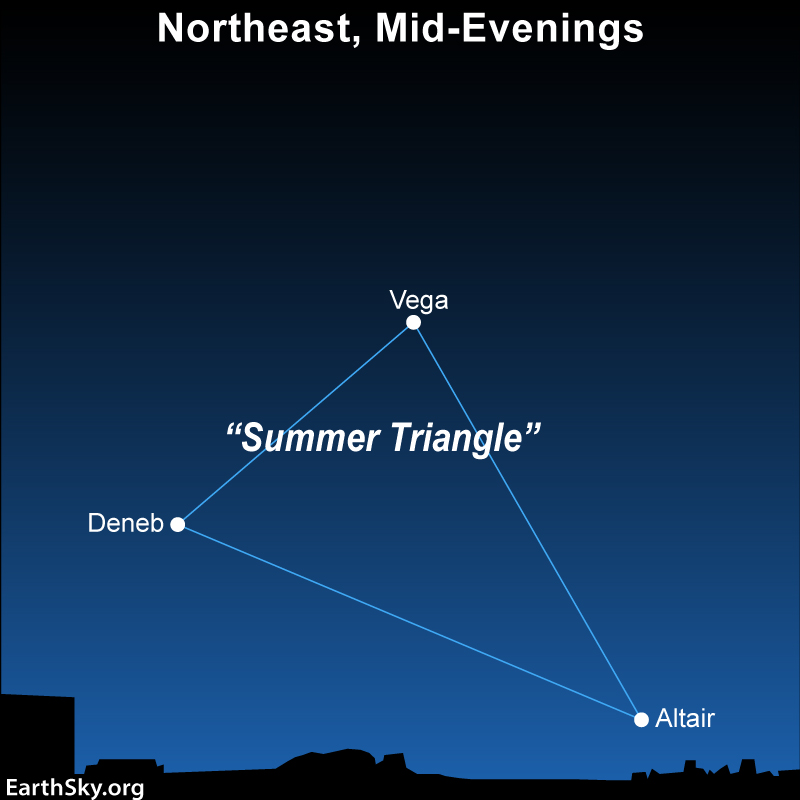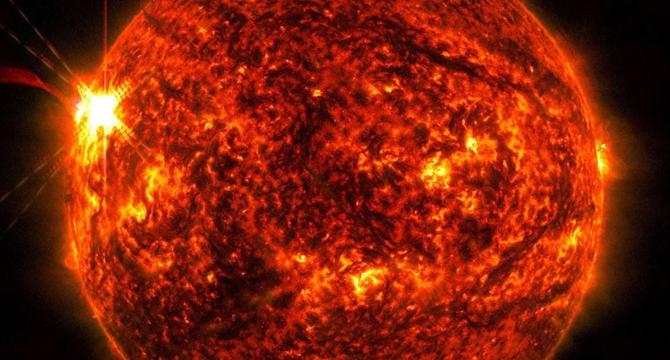Space News
Nasa
135

Image Credit: Nasa
Exercise Research, Growing Space Crops, and Science Packing Fill Day
- NASA astronauts aboard the International Space Station conducted various research activities, including exercise studies and growing space crops.
- Expedition 73 crew members packed cargo for upcoming departures and conducted experiments on cardiovascular and respiratory systems' adaptation to weightlessness.
- The crew worked on transferring research samples, installing hardware for experiments, and preparing the SpaceX Dragon cargo spacecraft for its return to Earth.
- Additional activities included emergency drills, sound level measurements, swapping gas bottles for scientific studies, and stowing cargo on the Progress 90 resupply ship.
Read Full Article
8 Likes
Livescience
382

Image Credit: Livescience
Unknown strain of bacteria found on China's Tiangong Space Station
- Scientists have found a new strain of bacteria, Niallia tiangongensis, inside China's Tiangong space station, which is a variant of a soil-dwelling terrestrial microbe that can cause sepsis.
- The bacteria was discovered by the crew of the Shenzhou-15 mission in samples collected in 2023 before being sent back to Earth for analysis.
- The new strain has picked up adaptations to survive in space, including genes for responses to oxidative stress, radiation damage repair, and forming biofilms to extract carbon and nitrogen.
- Further study on this new strain could provide insights into how it and other microbes survive in space, potentially helping safeguard astronauts' health and spacecraft functionality.
Read Full Article
22 Likes
Nasa
237

Image Credit: Nasa
NASA to Welcome Expedition 72 Astronauts Home at Space Center Houston
- Four NASA astronauts, including Nick Hague, Suni Williams, Butch Wilmore, and Don Pettit, are set to participate in a welcome home ceremony at Space Center Houston after returning from missions aboard the International Space Station.
- The astronauts will share mission highlights and recognize key contributors during a public event on May 22 at NASA Johnson Space Center's visitor center.
- The astronauts traveled significant distances during their missions, conducted scientific research, and completed various experiments aimed at improving future space missions' health, safety, and sustainability.
- Space station research supports NASA's future deep space missions to the Moon and Mars, as well as commercial opportunities in low Earth orbit and beyond.
Read Full Article
14 Likes
Nasa
25

Image Credit: Nasa
Unearthly Plumbing Required for Plant Watering in Space
- NASA is conducting experiments to develop efficient plant-watering methods for spacecraft, crucial for sustaining astronauts with fresh vegetables in space.
- Challenges of fluid dynamics in microgravity include rogue bubbles, gas ingestion, droplet ejections, and unstable liquid flows.
- The Plant Water Management (PWM) experiments on the International Space Station test capillary hydroponics to address these challenges.
- PWM-5 and -6 hardware includes pumps, tubing, valves, and hydroponic channels to test various parameters for plant watering.
- The equipment is designed for hydroponic and ebb-and-flow testing, demonstrating capabilities for stable plant watering in space.
- PWM technology uses passive gas-liquid separation mechanisms to mimic Earth's gravity effects, crucial for successful plant irrigation.
- Successful PWM demonstrations advance technologies for passive plant watering in space, overcoming wetting challenges in low-gravity environments.
- The PWM experiments provide plug-and-play solutions for effective plant watering despite uncertainties about the role of real plants in these systems.
- Dr. Mark Weislogel from IRPI LLC leads the project sponsored by NASA's Biological and Physical Sciences Division.
- The advancements in PWM technology offer promising solutions for sustainable plant cultivation in space, ensuring astronauts' nutritional needs are met during deep space missions.
Read Full Article
1 Like
Discover more
Brighter Side of News
418

Image Credit: Brighter Side of News
Scientists predict the universe will die much sooner than expected
- Telescopes allow scientists to look back in time, but what lies ahead for the universe is now explored in new research.
- Researchers suggest that not only black holes, but also neutron stars and white dwarfs, may slowly shrink away over time.
- Gravitational pair production may cause objects to decay with neutron stars and black holes decaying at a similar rate.
- The decay times estimated by the researchers suggest a much shorter lifespan for white dwarfs and neutron stars than previously thought.
- The decay time is linked to density, not just mass or size, leading to a revised timeline for the potential end of the universe.
- The interdisciplinary research combining astrophysics, quantum physics, and mathematics sheds new light on the future of the cosmos.
- The study also deepens our understanding of fundamental physics, challenging traditional notions of event horizons and gravitational decay.
- While these cosmic countdowns span vast timescales, they offer insight into the eventual fate of stars, moons, and even humans.
- This research prompts contemplation on the transient nature of all things in space, emphasizing the gradual fade of celestial objects over time.
- As we ponder the future of the universe, these findings bring into question our understanding of energy conservation and thermodynamics in the distant future.
Read Full Article
25 Likes
Earthsky
182

Image Credit: Earthsky
How did dinosaurs become birds? This fossil offers insights
- Archaeopteryx, a bird-like dinosaur, is providing insights into how dinosaurs evolved into birds.
- A well-preserved Archaeopteryx fossil at the Field Museum in Chicago has revealed feathers, soft tissue, and skeletal features.
- The specimen, known as the Chicago Archaeopteryx, shows similarities with modern birds and suggests flight capabilities.
- Researchers used advanced techniques like CT scanning and UV light to uncover hidden features in the fossil.
- The fossil's preparation involved preserving bone and soft tissue coloration for better analysis.
- The study showed intermediate features in the roof of the mouth, indicating evolution towards modern bird characteristics.
- Fossils in the hands and feet of Archaeopteryx provided clues about its mobility and foraging habits.
- Evidence suggests Archaeopteryx was likely able to walk on the ground and climb trees.
- The long tertial feathers on the upper arm of Archaeopteryx indicate it may have been capable of powered flight.
- This discovery adds to the understanding of how some dinosaurs developed the ability to fly and evolve into birds.
Read Full Article
10 Likes
Earthsky
170

Image Credit: Earthsky
Deneb is an incredibly distant star. But how do we know?
- Deneb, located in the Summer Triangle, is one of the most distant stars visible to the naked eye, with estimates ranging from about 1,600 to 2,600 light-years away.
- The distance to Deneb has been determined through various methods, with different analyses yielding conflicting results, showcasing the evolving nature of scientific discovery.
- While the Hipparcos Space Astrometry Mission suggested a distance of around 2,600 light-years in the 1990s, newer analyses have proposed a distance of 1,548 light-years with a wide range.
- Not knowing Deneb's exact distance hinders accurate measurements of its size, mass, and energy output, highlighting the importance of distance determination in astronomy.
- The Gaia space observatory aimed to provide precise measurements of stars but faced challenges in imaging bright stars like Deneb due to saturation issues.
- Despite efforts to determine its distance, the exact distance to Deneb remains uncertain, with upcoming data releases from Gaia expected to shed more light on this distant star.
- Deneb's possible association with the Cygnus OB7 group suggests a distance of about 2,050 light-years, emphasizing the complexities involved in accurately measuring cosmic distances.
- As one of the luminous stars in our sky, Deneb's distance, when precisely determined, will contribute to enhancing our understanding of stellar properties and the vastness of the universe.
- The ongoing scientific quest to determine Deneb's distance reflects the continuous advancements in technology and methodology that shape our understanding of the cosmos.
Read Full Article
10 Likes
Nasa
85

Image Credit: Nasa
Andrea Harrington’s Vision Paves the Way for Lunar Missions
- Andrea Harrington, NASA's sample return curation integration lead, plays a crucial role in shaping the future of planetary exploration and interplanetary discovery.
- Harrington ensures that current and future sample collections from lunar missions to asteroid returns are handled with precision and preserved for long-term study.
- Her expertise in biology, planetary science, geochemistry, and toxicology aids in developing contamination control requirements for extraterrestrial samples.
- Harrington's contributions include developing technologies to reduce contamination during sample handling and preserve samples from missions like OSIRIS-REx and Hayabusa2.
- She has led assessments of facilities for future sample returns critical for missions to Mars, Europa, and Enceladus.
- Harrington's leadership and technical contributions at NASA have earned her two Director's Commendations.
- In her role as the Advanced Curation Medical Geology lead, Harrington pioneers exposure techniques to evaluate health risks of astromaterials with minimal sample material.
- She spearheaded a Space Act Agreement to build a science platform on the International Space Station for planetary science experiments.
- Harrington emphasizes the importance of communication in her NASA career and is passionate about contributing to the enrichment of future space scientists and explorers.
- She aims to inspire the Artemis Generation with the spirit of adventure and the potential for exploration of distant worlds through future missions.
Read Full Article
5 Likes
Metro
89

Image Credit: Metro
Nasa warns of huge solar flares that could cause blackouts on Earth
- Nasa warns of huge solar flares, the biggest in 2025 so far, which could disrupt radio transmissions, electric power grids, and pose risks to spacecraft and astronauts.
- The recent X2.7 solar flare impacted high frequency radio communications for ten minutes in the Middle East, and there is a risk of 'minor radio blackouts' predicted by Met Office for the week.
- Multiple coronal mass ejections last year led to a strong geomagnetic storm that impacted the US precision industry, and currently, seven sunspot regions facing Earth could potentially have an impact.
- Solar flares are powerful bursts of electromagnetic radiation from the Sun often associated with solar magnetic storms known as coronal mass ejections, with CMEs potentially causing phenomena like the Northern Lights.
Read Full Article
5 Likes
Analyticsindiamag
319

Image Credit: Analyticsindiamag
PierSight Secures Funding to Advance Maritime Surveillance Satellites
- Space-tech startup PierSight raised additional capital in a seed extension round, totaling $8 million with new investors like CE-Ventures and Sustainable Ocean Alliance.
- The funding will support the development of the world’s first satellite constellation combining Synthetic Aperture Radar (SAR) and Automatic Identification System (AIS) for maritime intelligence.
- PierSight aims to detect illegal fishing, marine pollution, and insurance fraud using advanced satellite technology, with its first satellite scheduled for launch in 2026.
- The startup, founded by ex-ISRO scientist Gaurav Seth and engineer Vinit Bansal, is focused on maritime surveillance to provide persistent visibility into maritime activity through satellite technology.
Read Full Article
19 Likes
Knowridge
204

Image Credit: Knowridge
How the squid galaxy’s neutrinos defy physics
- The IceCube Neutrino Observatory in Antarctica detected very energetic neutrinos coming from a galaxy called NGC 1068, known as the Squid Galaxy.
- Scientists were puzzled by the lack of gamma-ray emission accompanying the neutrinos, leading them to propose a new theory involving the decay of neutrons in the galaxy's jets.
- The new model suggests that high-energy neutrinos might be produced from the decay of neutrons resulting from collisions between helium nuclei and ultraviolet light, challenging traditional ideas.
- This discovery opens up the possibility of hidden neutrino production in other galaxies and provides insights into the forces surrounding supermassive black holes, advancing our understanding of the universe.
Read Full Article
12 Likes
Knowridge
208

Image Credit: Knowridge
Astronomers take a second look at twin star systems
- A new Yale study focuses on finding 'twin' planetary systems within binary star systems to study planet formation.
- Certain edge-on configurations of binary star systems allow astronomers to compare planets within them, similar to how doctors study human twins for understanding.
- The study led by Malena Rice, an assistant professor of astronomy at Yale, suggests that the alignment of binary systems could aid in new planet discoveries.
- By identifying nearly 600 edge-on binary star systems, researchers provide a roadmap for conducting comparative studies of planet formation within twin star systems.
Read Full Article
12 Likes
Medium
230

Image Credit: Medium
Thy Kingdom Compute: China’s Orbital Supercomputer and the Digital Dominion of Heaven and Earth
- China is launching a Three-Body Computing Constellation in orbit with 12 satellites embedded with an 8-billion-parameter AI model.
- The satellites communicate through 100 Gbps laser links and process data much faster than conventional ground-based data centers.
- The development of AI models in orbit raises concerns about orbital sovereignty and the potential for an arms race in advanced technologies.
- The situation has shifted the battleground from physical locations to domains such as bandwidth, latency, and orbital control, prompting questions about the U.S.'s response and preparedness.
Read Full Article
13 Likes
Spaceflightnow
332

Live coverage: SpaceX to launch 23 Starlink satellites on Falcon 9 launch from Cape Canaveral
- SpaceX is set to launch 23 Starlink satellites on a Falcon 9 rocket from Cape Canaveral Space Force Station.
- The Starlink 12-15 mission will include 13 satellites with Direct to Cell capabilities.
- The launch is scheduled for 11:58 p.m. EDT on May 19, with favorable weather forecasted.
- The Falcon 9 booster 1095 will be used for this mission, aiming for a droneship landing post-launch.
Read Full Article
19 Likes
For uninterrupted reading, download the app